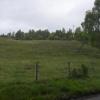35.083 Xystophora pulveratella (Herrich-Schäffer, 1854)
Status and Distribution
Apparently restricted to several parts of the Highlands of Scotland and one site in north east England. Reported hisorically from five other well scattered locations, extending from south Devon to the Clyde area in Scotland. The record from Devon is now considered unreliable and that from Gloucestershire is open to question (Parsons, M., 2015. Possible and Potential Moth Extinctions in England). Of the remaining sites, it was last recorded in 1912 in Co. Durham. One was attracted to an MV light in Seghill (SE Northumberland) on 8th June 2021, the first in England since 1912.
Provisional map
Foodplant and Larval Feeding Signs
Lotus corniculatus (bird's-foot-trefoil), see plant distribution map, Lathyrus linifolius (formerly montanus - bitter-vetch) and Trifolium pratense (red clover).
In Europe also found on Securigera varia (crown vetch), Lathyrus pratensis (meadow vetchling), Medicago minima (bur medick), M. sativa (lucerne), Onobrychis (sainfoin) and Vicia cracca (tufted vetch).
In Meyrick, E., 1927, A Revised Handbook of Lepidoptera, Coronilla (now Securigera) and Medicago are listed as food-plants but this is considered unlikely, as is a European report of Achillea millefolium (yarrow), (Emmet and Langmaid, 2002).
Habitat
In Scotland, on partially sheltered and sunny slopes which are either predominantly flowery grassland or grass-heath. They are at low altitude in Highland lower valley sides and often occur alongside Athrips tetrapunctella (thanks to Dr. M. R. Young for these details and observations).
Habitat not described in England.
Finding the Moth
Larva: spins leaves together from which it feeds on surrounding foliage.
Adult: flies low over the foodplant at dusk.
Similar Species
Forewings without any obvious markings, the scales being light fuscous, tipped with buff. The head and thorax are of a similar colour but the palpi are buffish tinged reddish towards the base of segment two when fresh and more whitish towards the apex of segment three. If this species is suspected away from the known locations in Scotland it is recommended the record be supported with no more than a single voucher specimen due to the moths status.
Single brooded from late May to the end of June.
Very limited data available on the flight period in Britain.





